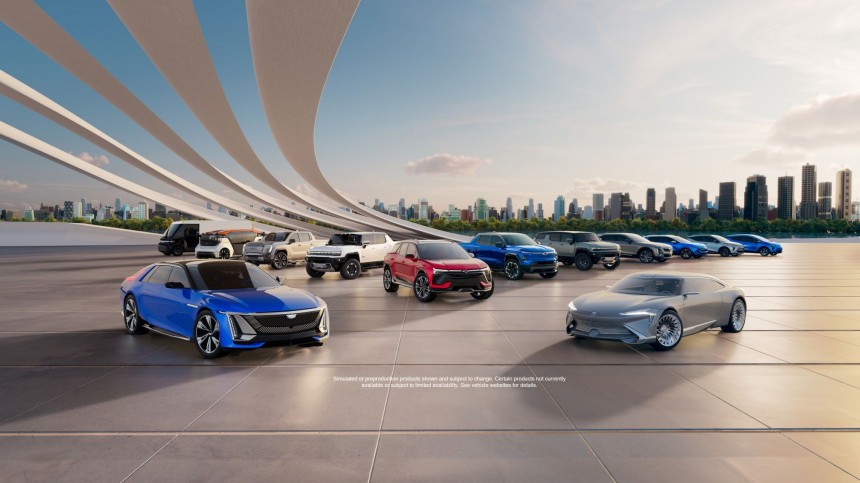Employees of the "The Big Three" have started strikes at different plants after the negotiations fell through. General Motors, Stellantis, and Ford must now deal with around 13,000 workers who won't do their jobs out of solidarity with their colleagues. But GM CEO Mary Barra received a consistent raise. Here's her take on why employees shouldn't receive the same treatment.
The parts shortage, the semiconductor woes, and the supply chain troubles of last year were somewhat fixed in 2023. As such, we expected car prices to stabilize. Production was once again in full force while the demand lowered a bit. Tesla, for example, perfectly showcased what happens when you must sell cars and people aren't willing to deal with high acquisition costs any longer.
But unionized workers from the automotive industry decided they had enough and kickstarted serious negotiations around six weeks ago. Their demands were simple – 40% raises across the board over four years, a 32-hour workweek (four eight-hour days or five six-hour days) without reduction in pay, a limit on using temporary workers, and the restoration of retiree healthcare plus classic pensions that leave 401(k) plans in the past.
After a first round of negotiations, the union representatives announced they would reduce the raise request to 36% over four years. But the "Big Three" didn't budge.
Ford CEO Jim Farley even went public and said that what the unionized workers ask for would amount to an annual pay of $300,000 per employee for what could become a four-day workweek.
That adds more pressure on GM, Ford, and Stellantis. The automakers were already trying to figure out how to transition to producing more affordable electric vehicles without hemorrhaging money. Now, they have to deal with a strike that cripples production of their most popular models and Tesla. The famous EV maker is selling cars at a hefty discount.
Meanwhile, legacy automakers struggle to find any room for similar price reductions. Ford announced some, but the most generous one was for a F-150 Lightning trim that isn't in production in 2023.
But it was GM CEO Mary Barra who drew the short stick and had to answer the most challenging question yet. A CNN reporter indicated that the executive received an income bump of about 34% in the last four years. "Why should your workers not get the same type of pay increase that you are getting?" added the reporter.
Barra explained that her compensation of about $30 million is primarily based on the company's performance. Some could argue that includes worker performance as well. But she noted that employees also enjoy an important perk - profit sharing. So, "when the company does well, everyone does well."
The executive added that GM's policy to redistribute a part of the profits resulted in "record profit sharing for represented employees." No actual numbers were shared.
The CEO explained that the counteroffer GM has presented to union representatives is "very good." Still, she remains frustrated because no honest dialogue or compromise is happening.
The workers' representatives argued that they had waited long enough to get back some of the perks they agreed to let go when GM was bailed out by the taxpayers and had to revamp its operations.
But General Motors is proposing, among other things, a 20% pay increase and no reduction for the 40-hour workweek. Many consider it to be fair.
The CEO argued that anyone involved in this movement should consider that the automotive business constantly goes through cyclical phases. Some years are good, others are bad.
But this period is of utmost importance because the move to zero-tailpipe emission propulsion systems is complicated and must be done right. The company needs money for investments that would help GM survive in the next phase of the car-making story and guarantee job security, per Barra.
Ford boss Jim Farley, for example, said the union's demands would bankrupt the company. The organization responded by indicating that the CEO makes over $21 million per year.
Lastly, in 2022, GM reported a gross profit of nearly $21 billion. Ford announced a figure of $23.6 billion, while Stellantis accrued over $31 billion.
Another interesting tidbit before we end this piece is that the International Union, United Automobile, Aerospace and Agricultural Implement Workers of America (UAW) has never organized a simultaneous strike on the "Big Three" before. It's an historic moment.
But unionized workers from the automotive industry decided they had enough and kickstarted serious negotiations around six weeks ago. Their demands were simple – 40% raises across the board over four years, a 32-hour workweek (four eight-hour days or five six-hour days) without reduction in pay, a limit on using temporary workers, and the restoration of retiree healthcare plus classic pensions that leave 401(k) plans in the past.
After a first round of negotiations, the union representatives announced they would reduce the raise request to 36% over four years. But the "Big Three" didn't budge.
Ford CEO Jim Farley even went public and said that what the unionized workers ask for would amount to an annual pay of $300,000 per employee for what could become a four-day workweek.
That adds more pressure on GM, Ford, and Stellantis. The automakers were already trying to figure out how to transition to producing more affordable electric vehicles without hemorrhaging money. Now, they have to deal with a strike that cripples production of their most popular models and Tesla. The famous EV maker is selling cars at a hefty discount.
Meanwhile, legacy automakers struggle to find any room for similar price reductions. Ford announced some, but the most generous one was for a F-150 Lightning trim that isn't in production in 2023.
But it was GM CEO Mary Barra who drew the short stick and had to answer the most challenging question yet. A CNN reporter indicated that the executive received an income bump of about 34% in the last four years. "Why should your workers not get the same type of pay increase that you are getting?" added the reporter.
The executive added that GM's policy to redistribute a part of the profits resulted in "record profit sharing for represented employees." No actual numbers were shared.
The CEO explained that the counteroffer GM has presented to union representatives is "very good." Still, she remains frustrated because no honest dialogue or compromise is happening.
The workers' representatives argued that they had waited long enough to get back some of the perks they agreed to let go when GM was bailed out by the taxpayers and had to revamp its operations.
But General Motors is proposing, among other things, a 20% pay increase and no reduction for the 40-hour workweek. Many consider it to be fair.
The CEO argued that anyone involved in this movement should consider that the automotive business constantly goes through cyclical phases. Some years are good, others are bad.
Ford boss Jim Farley, for example, said the union's demands would bankrupt the company. The organization responded by indicating that the CEO makes over $21 million per year.
Lastly, in 2022, GM reported a gross profit of nearly $21 billion. Ford announced a figure of $23.6 billion, while Stellantis accrued over $31 billion.
Another interesting tidbit before we end this piece is that the International Union, United Automobile, Aerospace and Agricultural Implement Workers of America (UAW) has never organized a simultaneous strike on the "Big Three" before. It's an historic moment.
The CEO of General Motors just went on CNN and it went like this:
— More Perfect Union (@MorePerfectUS) September 15, 2023
"You've seen a 34 percent pay increase in your salary.
You make almost 30 million. Why should your workers not get the same type of pay increases that you're getting leading the company?" pic.twitter.com/wFnCZD86RR
This man made $21 MILLION DOLLARS last year. https://t.co/9H3wLk5Vo0
— UAW (@UAW) September 14, 2023












